Tortona, Italy: Where Stuffed Pasta Carries Family Legacy To-Go
L’Agnolotto restaurant preps freshly made pasta for take-away. The family’s “classico” dish has a surprise ingredient. The Piedmont city borders hills where local wine country begins.
Beatrice Cuniolo lofts a fresh serving of L’Agnolotto’s star dish, the “Classico,” which can be ordered as take-away. Red wine often accompanies the meat-based pasta. A cook, Andrea, is handling today’s lunch rush.
Tucked behind Tortona’s cathedral is a Piedmont region take-away joint where homemade pasta is stuffed with beef coming from a cow’s neck—but that’s not all.
“It’s a dish you eat during the winter,” says Riccardo Magistrali, 28, looking toward the counter, behind which an apron-clad cook is hovering over a sizzling frying pan. “It’s like the fast food of agnolotti. It’s a simple dish, nothing fancy. It’s meat and pasta.”
At family-run L’Agnolotto, succulent spleen complements beef. Its star dish, the “Classico,” is one of more than a dozen ravioli-like orders that tempt in-a-hurry diners to forsake McDonald’s. In Tortona, a run for the border is replaced by a dash to the town center where locals are just lovin’ it.
A crash course in stuffed north Italian cuisine means distinguishing among tortellini (Emilia-Romagna); ravioli (diverse Italian regions); anolini (Piacenza); and agnolotti (Piedmont-wide). Each pasta varies in shape, flavor and ingredients. Agnolotti are square.
A smaller serving of the Classico goes for €8, with the standard portion €10.
Tortona is an hour’s drive south of Milan and can be reached by fast-moving regional trains. The city of 27,000 is a short ways from wine-haven Asti, famous to Americans for its spumante but dotted with vineyards yielding non-sparkling reds and whites.
One type of agnolotti pasta—stuffed with neck-area beef and cow spleen—is the “Classico.” The meat mixture, prepped the night before, is cooked with red wine.
In Italy, some of the top récipés—often originating from peasants—call for animal anatomy that in some countries would be trashed. Blood sausage can be made from boar while risotto-like paniccia has gristle and tendon. Centuries of war and poverty taught citizens to cook creatively, as if life was one great big recession.
Since 1962, L’Agnolotto has fed Tortona diners. Giuseppe “Pino” Cuniolo runs a proper restaurant with the same name while his wife, Monica Zito, 58, oversees the take-away eatery. Their daughter, Beatrice, 28, helps out on weekends and works full time as a clinical researcher at a hospital in Pavia. Magistrali is her boyfriend.
At 2:30 p.m., the L’Agnolotto crew, from left to right, squeezes in a one-minute break: Riccardo Magistrali, Beatrice Cuniolo, Monica Zito, Andrea, and Kasia.
Monica Zito shows generations of family members who have run L’Agnolotto, a long-time Tortona restaurant that has had a take-away branch since 2016. She is drinking water but is versed in wines.
L’Agnolotto adjoins the city cathedral, right. A senior ventures out for a run to pasta.
From town to town, no one agnolotti pasta is quite the same, Magistrali says. Whereas the Cuniolos use spleen and neck meat, others more traditionally rely on three different beef cuts as well as vegetables.
“The strange thing about Italy is every time you change the place, the récipé will change,” says Magistrali, a graduate of University of Milan who is employed by a company that handles irrigation projects across Italy. “Everyone is doing what their grandma and grandpa did in the past. It’s keeping the tradition.”
In Tortona, agnolotti pasta must be sprinkled with Grana Padano cheese, not Parmesan, he says, prompting him to add red wine should accompany the meat-based pasta, with Barbera a sound choice.
That’s not to say white can’t be drunk, says Beatrice Cuniolo, as the conversation shifts to Timorasso, a local wine on the rise. It averages €25 a bottle, Zito says.
“Timorasso is a re-discovered white wine,” says Magistrali. It and others are cultivated in the hills beyond Tortona.
L’Agnolotto’s take-away locale opened in 2016 and was prepared for business when the Covid pandemic struck.
Making pasta, though, is most about family and friends.
“What makes (agnolotti) special is the relationship you have with other people when you are making it,” Magistrali says.
A dog named Bellaboo plays near Tortona’s medieval tower, part of a crumbling fortress that was destroyed by Napoleon’s French troops in the early 1800s. It rests atop a town hill.
-30-
En route to the tower, an Oregon Ducks basketball fan pauses outside a 17th-century Tortona church.

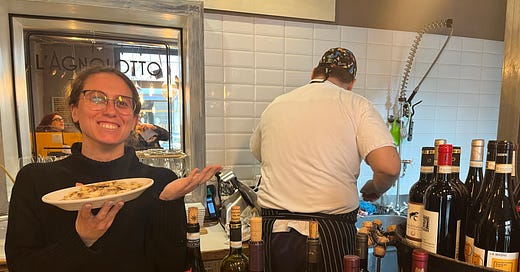



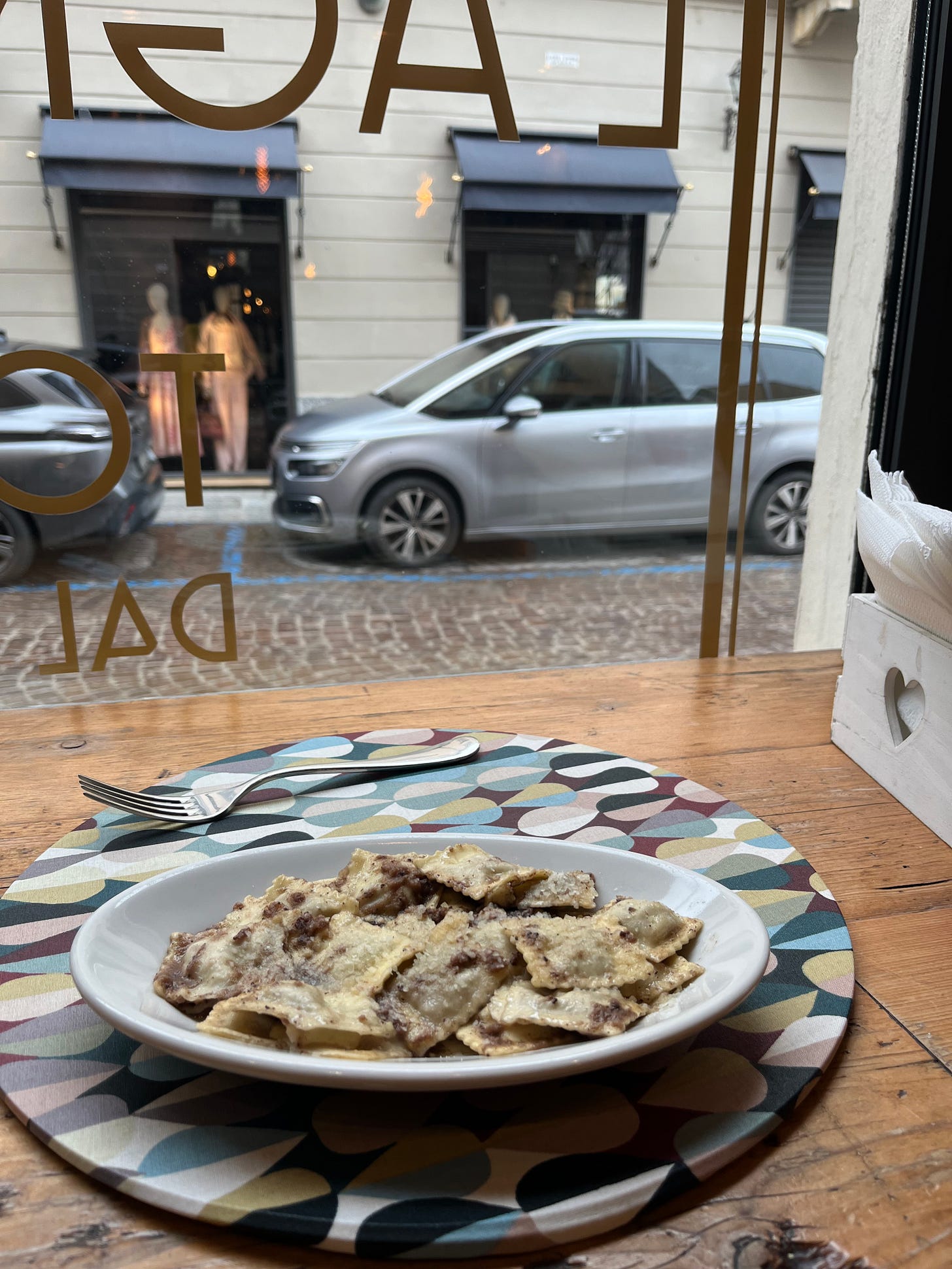
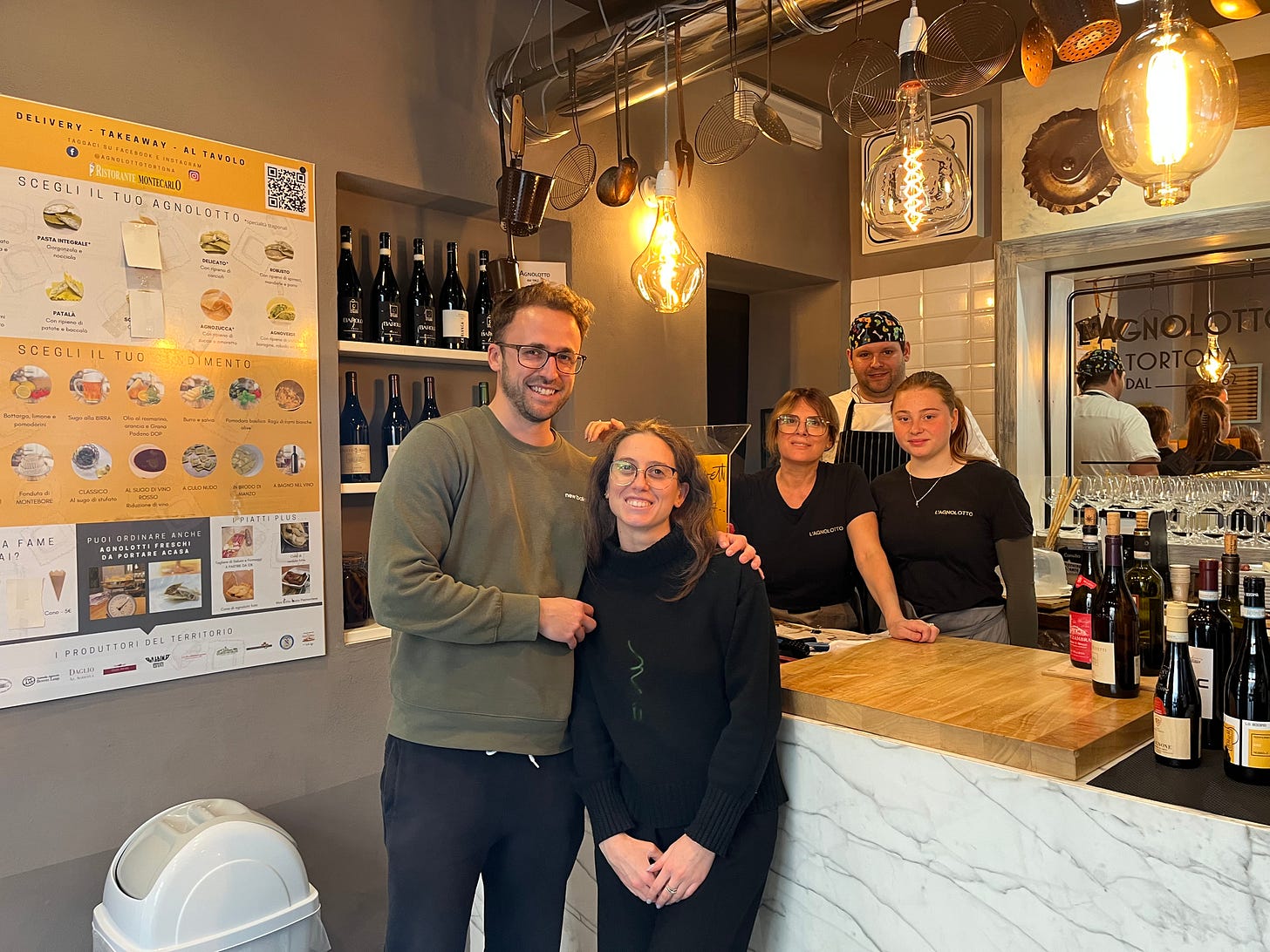
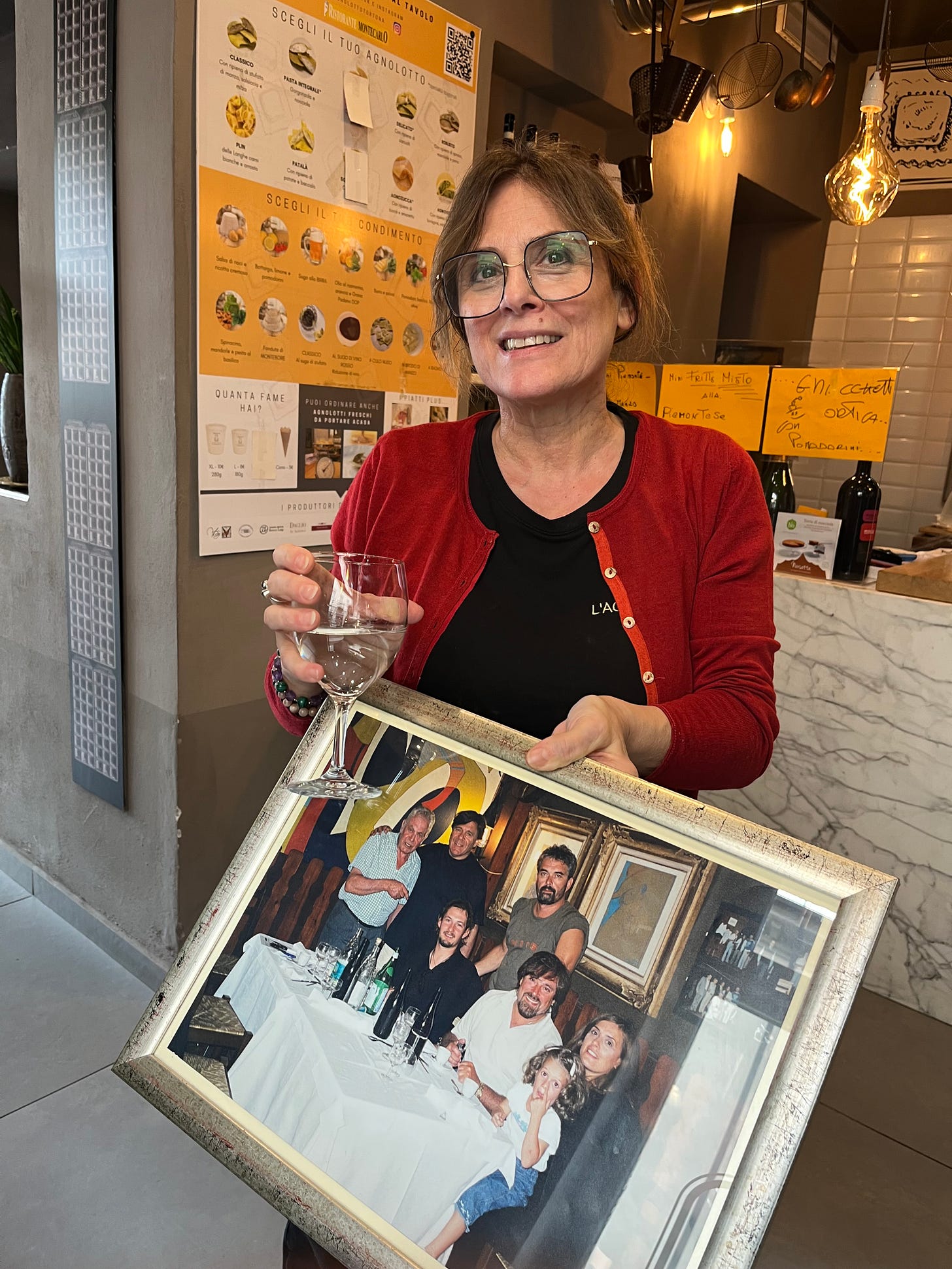
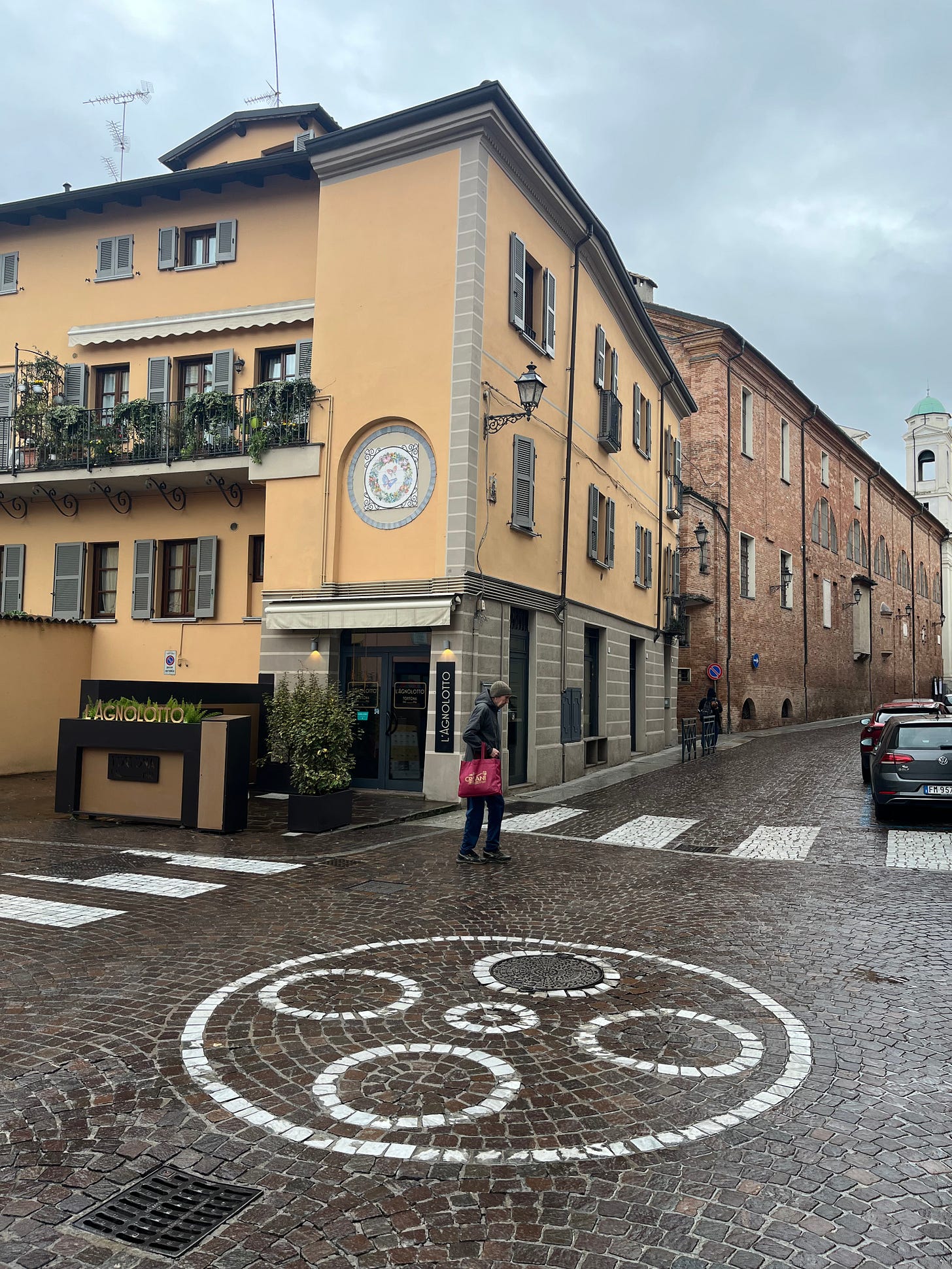
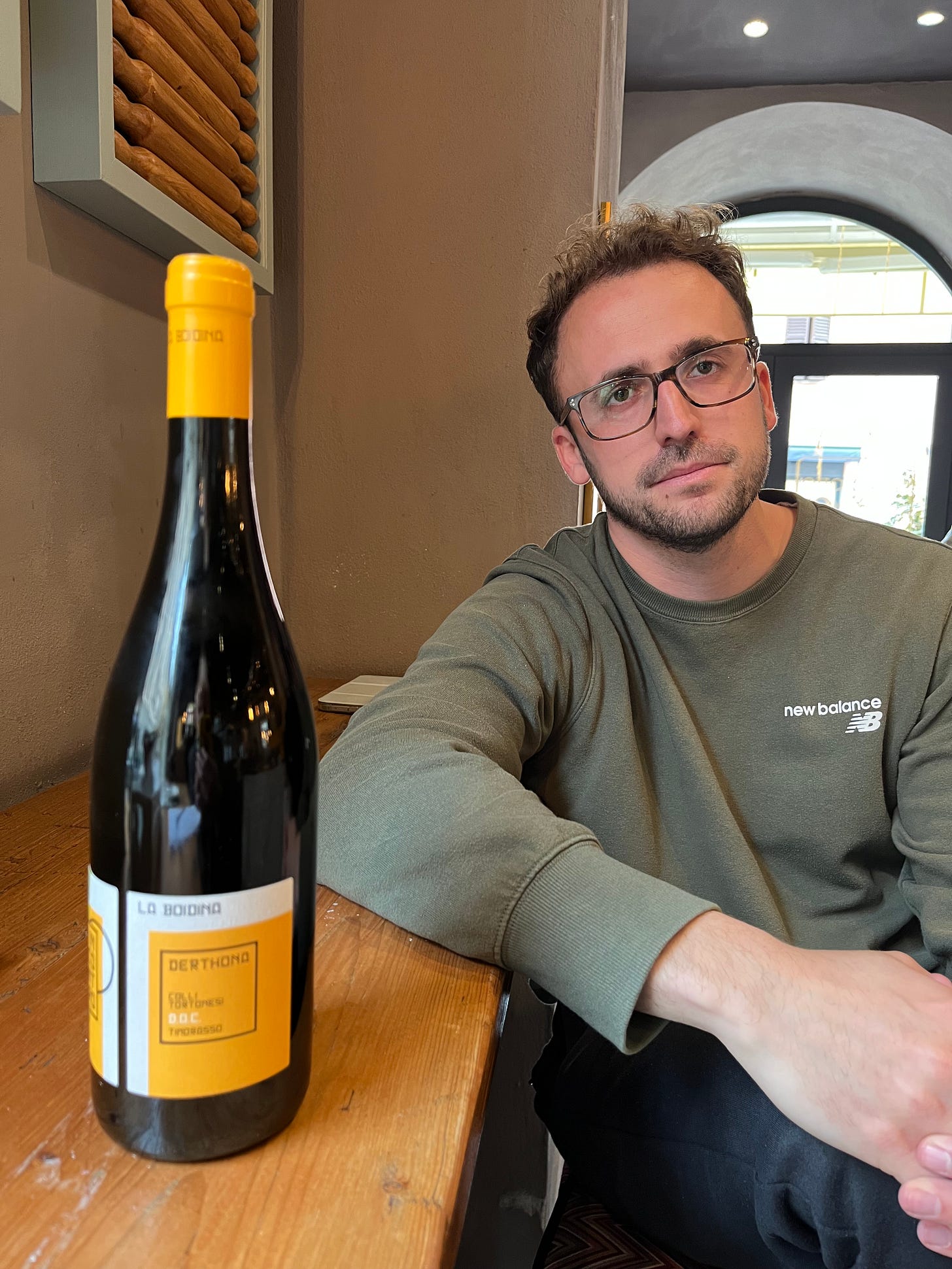
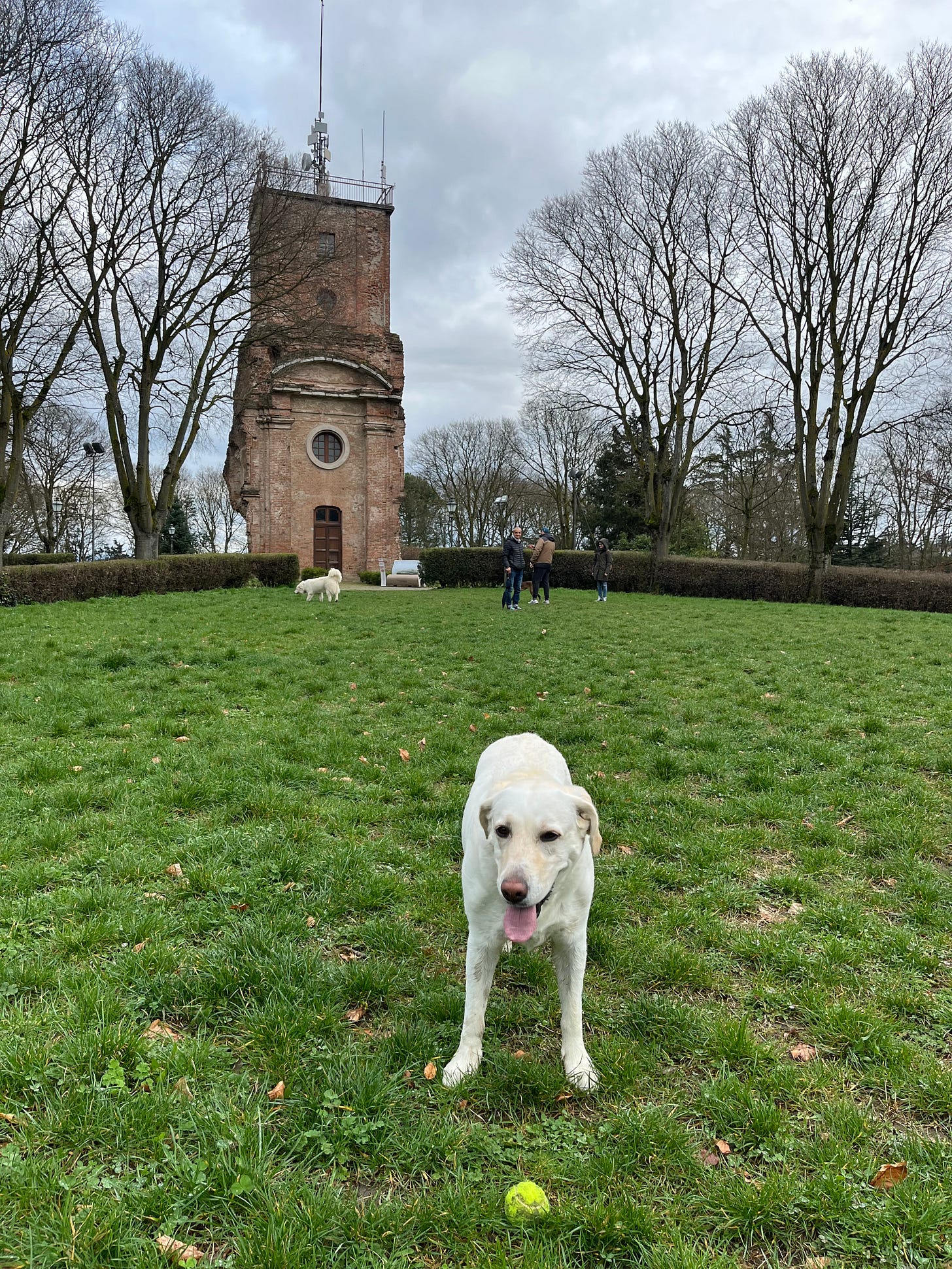

L’Agnolotto’s extended family seem warm and friendly. What a nice restaurant. And I want to reach into the photo of the pasta and devour it!
I have to admit that my mind came to a full stop at minced spleen, but I bet if I didn't know the ingredients before hand, I would love the pasta. No way I'm eating gristle though. I am enjoying your guided tour of Italy, food, drink, and regular folks.